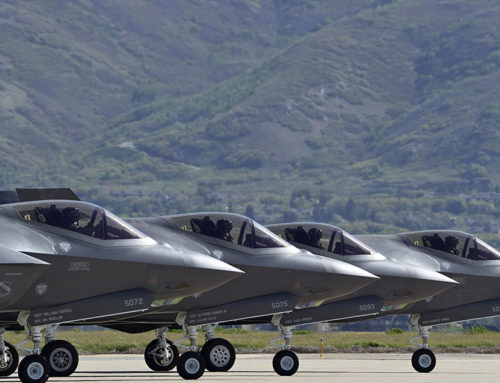While you’re waiting for the FY2021 President’s Budget Request (PBR) to be made public, we thought you might find this write up of the Pentagon’s recent “FY2021 Defense Wide Review” a good way to pass the time. As a budget watchdog group, we love to see a discussion about saving your taxpayer dollars at the Pentagon. But this is more like “savings.” When the PBR drops later today, we’ll be interested to see if these transfers and savings are reflected in reality.
More later, so stay tuned!
The report to Congress on the FY2021 “Defense Wide Review” (DWR) is slowly becoming public. It’s leaving us scratching our heads, and not just because of the misleading name.
You will be forgiven for thinking a “defense wide” review is one that looks at the whole Pentagon. Instead, the review looked at the “defense-wide” (note that pesky hyphen!) functions of the Department of Defense. In other words, it didn’t touch on issues directly related to the military services.
Fair enough. The Pentagon is a behemoth – so a review of even a portion of it, with an eye to what Defense Secretary Esper describes as “reforming the Fourth Estate, which is composed of the parts of the DoD that are outside the military departments” is worthwhile.
And we agree with Secretary Esper that, “we must ensure we maximize the value of our resources and make the most of every taxpayer dollar.”
But color us skeptical that the $5.7 billion in FY2021 cuts and $2.1 billion in transfers identified in the report will be stretched to cover what the Secretary refers to as “Key investments made possible by the DWR…”
- “increased investment” in the modernization of all three legs of the nuclear triad.
- “enabled DoD to fund the establishment of the [U.S. Space Force] from within available resources.”
- “enable increased missile defense capacity and capability, and allows [Missile Defense Agency] to pursue a multi-layered approach to homeland missile defense.]”
- “accelerate development and fielding of hypersonic weapons over the Future Years Defense Program (FYDP).”
- “significantly accelerated investment in [Artificial Intelligence] to increase the scope and capability of AI applications fielded across the full range of DoD missions.”
- “resource key investments in secure and resilient 5G technologies and networks and speed their adoption…”.
- “resource substantial investments in the [Immediate Response Force] and [Contingency Response Force] readiness allowing DoD to fully exercise these capabilities…”.
WOW! That must be some magic money. At TCS we won’t sneeze at $7.8 billion in “savings” by transferring money to higher priorities. But allow us to do a little simple mathematics here. The Secretary identifies seven “Areas of Investment” that we summarized above. Leaving aside the unknown details of the $2.1 billion of “transfers” to other parts of the Pentagon, let’s go with the simplest, and least likely, division of funds and say the $5.7 billion in actual cuts will be equally divided across all seven Areas of Investment. That would mean each area would receive just over $814 million.
Now, let’s take the most recent Congressional Budget Office estimate of just the cost of the first Area of Investment on the list, modernizing all three legs of the nuclear triad: $494 billion from FY19 – FY28. So, that means an average of roughly $50 billion a year. That means the DWR would pay for roughly 6.1 percent of the average annual (and whopping great) cost of modernizing the nuclear triad.
And then there is the real elephant in the room. The report notes, “However, to fully implement some of these reforms, we require support and action, and, in certain cases, tough decisions.”
Again, at Taxpayers for Common Sense we won’t sneeze at $5.7 billion in “savings” and $2.1 billion in transfers. In fact, we actively hope this reallocation of funds (in other words, not savings) will lead to an equal sized reduction to the Pentagon topline in the FY2021 budget. IOW – real savings.
But we aren’t holding our breath that Congress will be rushing to approve the underlying changes to legacy missions that would allow these savings.
Stay tuned. We’ll be reporting on how this report is received by Congress.














Get Social